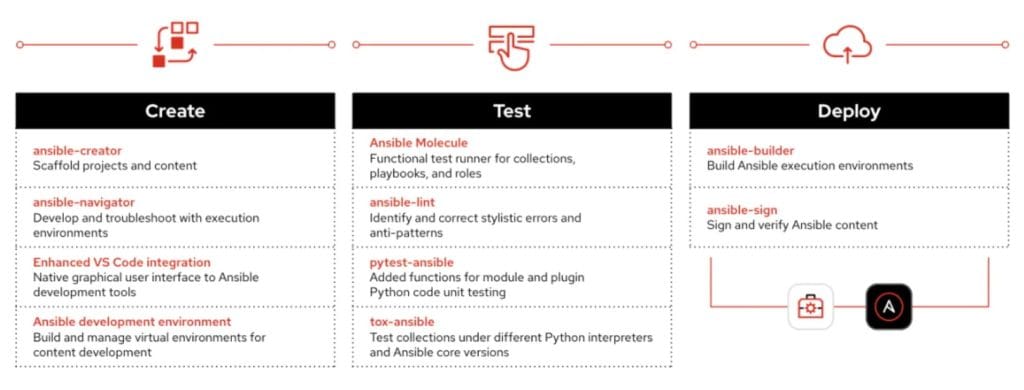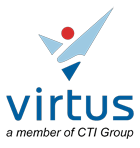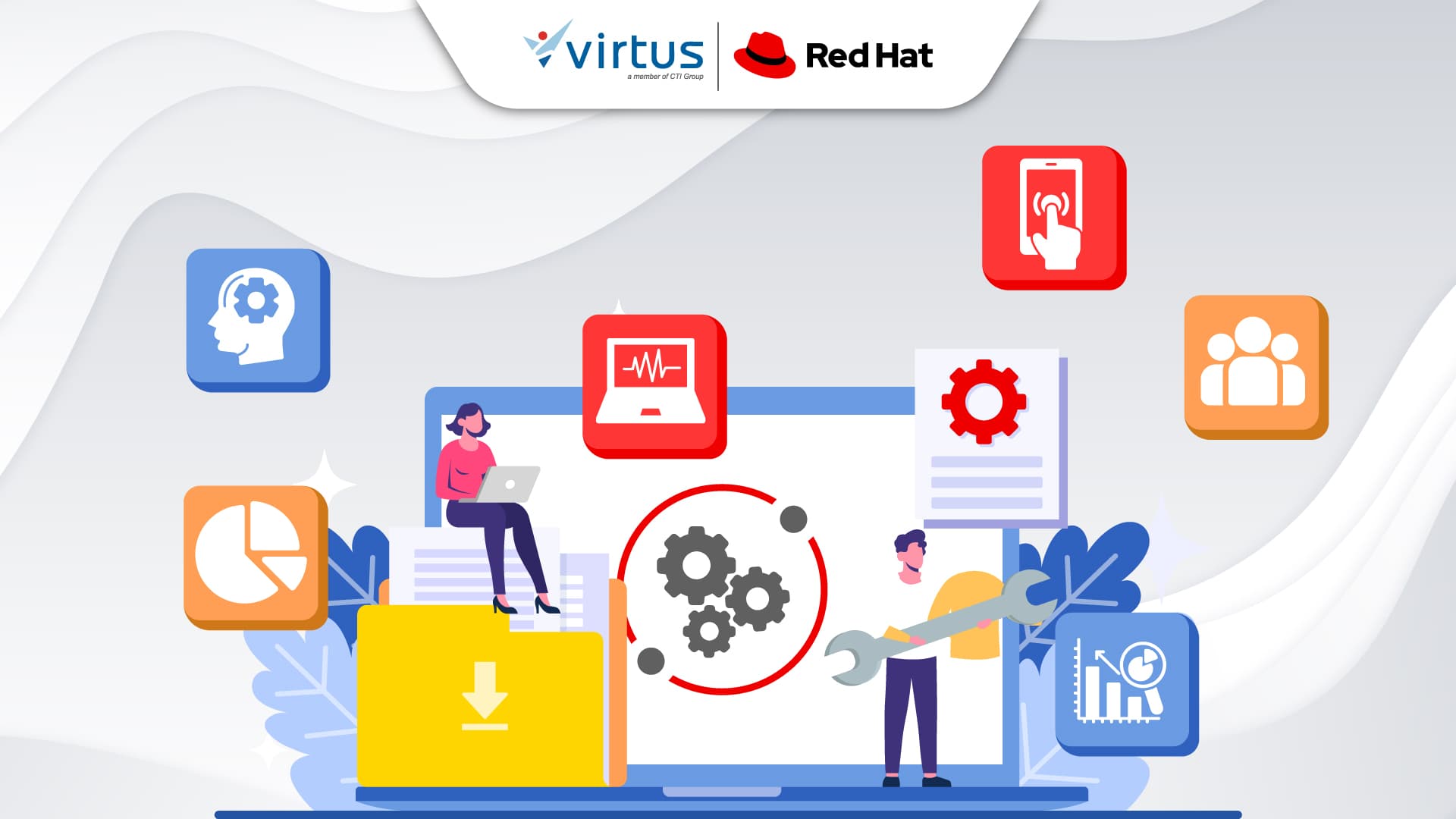Today’s IT environment is like a giant puzzle—servers, cloud platforms, containers, and edge devices all interconnected. Without proper management, chaos can erupt at any time: system errors, inconsistent configurations, or unexpected downtime. That’s where configuration management plays a critical role.
Imagine being able to manage your entire IT configuration automatically, consistently, and repeatably. No more manual work, no more fear of making mistakes. This is the smart solution that many enterprises are starting to adopt. One of the most reliable tools? Red Hat Ansible Automation Platform 2.5.
What is Configuration Management and Why Does It Matter?
Configuration Management (CM) is a systematic process of managing, organizing, and maintaining consistency across IT infrastructure configurations over time. With CM, IT teams can ensure that systems remain in their desired state—even during updates or changes.
This approach helps organizations avoid configuration drift, minimize downtime, and accelerate deployment processes.
Common Challenges in IT Infrastructure Configuration
Without proper configuration management, you may face issues such as:
- Inconsistencies between development, staging, and production environments
- Time-consuming provisioning processes
- Dependence on specific individuals for configuration documentation
So, what’s the solution? Red Hat Ansible Automation Platform (AAP) 2.5 answers these challenges. With significant updates, AAP 2.5 empowers organizations to transform their IT operations to be faster, safer, and more scalable.
Introducing Red Hat Ansible Automation Platform 2.5: Automation for Modern Configuration Management
Red Hat Ansible Automation Platform 2.5 offers a comprehensive solution for today’s configuration management needs. It goes beyond reliable playbook-based automation by introducing event-driven automation, a unified user interface, and flexible access control.
Ansible enables IT teams to automate provisioning, patching, and updates, —declaratively and repeatably.
How Red Hat Ansible 2.5 Simplifies Configuration Management

Source: Red Hat Ansible Automation Platform 2.5
The platform operates with the Infrastructure-as-Code (IaC) principle, where system configurations are written in reusable code. Here’s a general workflow:
- Define system configuration using YAML-based playbooks
- Execute automation via the Ansible Controller
- Manage and monitor system status through a unified UI
- Respond to changes with event-driven automation
- Audit every step with built-in historical tracking
Key Features of Red Hat Ansible Automation Platform 2.5 for Configuration Management
1. Event-Driven Automation
Event-Driven Automation allows the system to automatically respond to specific events occurring within the IT environment. For instance, if a server is overloaded or a critical configuration file changes, Ansible can automatically execute pre-defined playbooks to address the issue.
Use Case: If a server exceeds CPU or disk capacity, Ansible can shift workloads or adjust resources to maintain performance.
Benefits: Proactive incident response, reduced downtime, and improved service availability.
2. High Availability and Scalability
Designed for high availability (HA) and scalability, AAP 2.5 is ideal for enterprises with complex infrastructure. It manages thousands of nodes and servers simultaneously, maintaining operational efficiency.
HA ensures the platform remains operational even if some components fail.
Scalability allows resources to grow elastically as needed.
Benefits: Smooth operations without interruption, supporting rapid business growth with minimal complexity.
3. Enhanced RBAC and SSO
Enhanced Role-Based Access Control (RBAC) offers detailed and flexible access management. IT teams can assign permissions based on user roles, including fine-grained control such as limiting access to specific playbooks or configurations.
- Custom Roles: Create tailored roles with specific access levels
- Granular Permissions: Boost security and compliance through detailed controls
- Single Sign-On (SSO): Seamless login experience across integrated apps
Benefits: Strengthened system security and simplified user identity management.
4. Unified Web UI
The Unified Web UI provides a centralized, web-based interface for managing all aspects of Ansible automation. It allows IT teams to manage playbooks, monitor automation tasks, and analyze results—all from one dashboard.
- Centralized Management: Run tasks and manage content from one place
- Process Visualization: Easily track automation execution and identify issues
Benefits: Reduced management time and improved team efficiency.
5. Multi-Deployment Support
AAP 2.5 supports multiple deployment models to suit different infrastructures:
- RPM-Based Deployment: Install Ansible directly on RPM-based Linux servers
- Container-Based Deployment: Run Ansible in containers for better scalability and portability
- Operator-Based Deployment: Integrate with Kubernetes or OpenShift clusters using Operators
Benefits: Maximum flexibility for diverse infrastructure setups and simplified management across environments.
Configuration Management in Action: A Real-World Use Case
A major educational institution in Indonesia deployed Ansible 2.5 to automate configurations across hundreds of virtual servers. The result:
- System deployment time reduced from 3 days to 3 hours
- Security updates rolled out simultaneously with zero downtime
- Full visibility and control over infrastructure for the IT team
Also Read: What is IT Automation: The Benefits and Challenges for Businesses
Integrating Ansible 2.5 with Your Existing IT Ecosystem
Ansible integrates seamlessly with your current IT stack. Whether you’re using cloud platforms (AWS, Azure, GCP), legacy systems, containers, or hybrid environments, AAP 2.5 can be tailored to support your long-term automation strategy.
Learn More: Red Hat Ansible Automation Platform: Your Path to Intelligent IT Automation Orchestration
Ready to Start with Red Hat Ansible 2.5? Contact Virtus Today!
Don’t let complexity hold your IT operations back! With the integrated solution from Red Hat Ansible Automation Platform 2.5, Virtus Technology Indonesia (part of the CTI Group) is ready to help you manage your configuration management more automatically, efficiently, and securely.
Start your digital transformation today and experience the benefits of smarter, scalable automation. Contact the Virtus team to learn how we can help you unlock maximum efficiency in your IT operations.
Author: Ary Adianto
Content Writer CTI Group



























